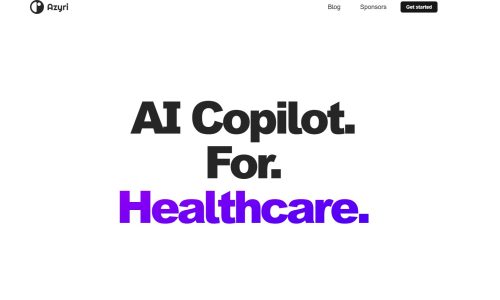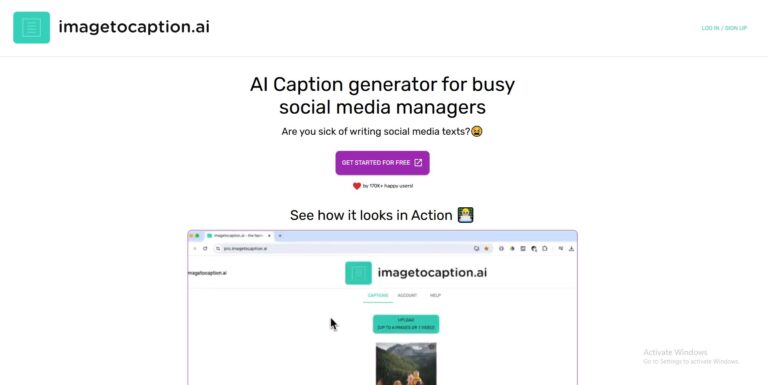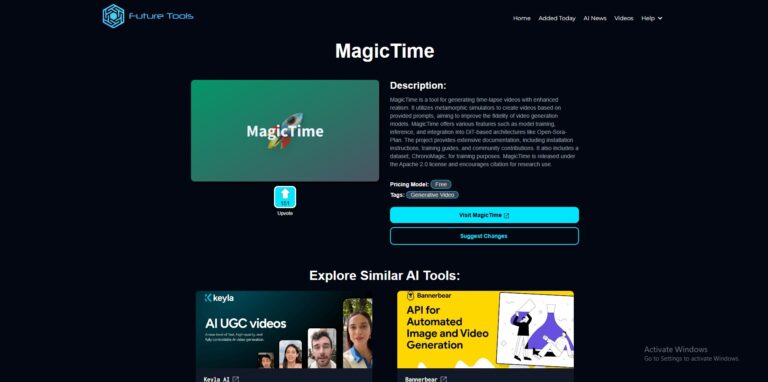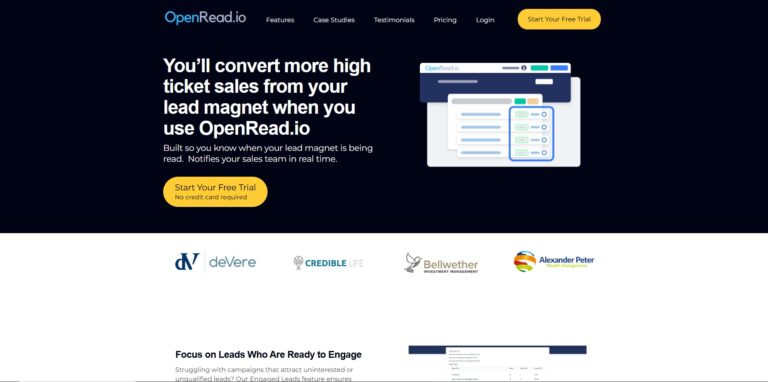Azyri is an AI Medical Assistant presently trending in the healthcare world, focusing on bone age estimation. It is designed to ease the process for healthcare professionals, medical students, and enthusiasts of medicine in a simplified manner with the help of advanced AI algorithms making bone age assessments easier. With mobile access, an easy-to-use interface, and access free of charge, the mission of Azyri will be for improvement in making clinical decisions at the bedside and workflows more efficient. This makes the tool an invaluable asset for anyone who must rely on the precision of diagnostic tools in practice or studies.
Key Features of Azyri
The features of Azyri were made to address medical requirements exclusively and make the tool both innovative and highly practical. Some of the features include:
1. AI-Based Bone Age Estimation:
Bone age estimation is an important factor in the diagnosis and management of pediatric endocrine disorders and other conditions. Azyri’s AI-based approach takes advantage of cutting-edge algorithms able to process bone structure and age-related features within a fraction of the time previously used for assessment. By being precise, the AI can help minimize diagnostic errors, especially in these complex medical scenarios. Azyri’s algorithms are continuously enhanced to bring very precise estimations, while healthcare fraternity professionals now have a recourse they can always rely upon for bone age.
2. Easy Mobility Access:
Azyri is now made mobile friendly; hence there will be easy access directly from any of the health professional’s gadget irrespective of their visits during rounds or consultations at distant places or remote settings. Mobile access availability means users can go anywhere, not being restricted to a desktop or system configuration. This increases where and how Azyri can be used, especially useful in fast-paced clinical environments, where efficiency and flexibility are key. Professionals can get assessments done on-the-fly so they have immediate insights to inform next steps.
3. User-Friendly Interface:
The usability in the design of Azyri’s interface. Navigating messy software often can be a barrier to effective adoption of the tool, especially when time is of the essence, like in the health sector. Azyri gets over this by offering an intuitive interface that is simple but not sacrifcious to functionality. The users with minimal training should learn how to navigate the app and hence make it ideal for professionals as well as students. The interface is user-friendly and guides a user throughout inputting data and reviewing estimates created with AI, allowing for user-friendly interaction with the application.
4. Free Access
Free-access model for Azyri disrupts an industry in which specialty software solutions come with a premium price. Azyri democratizes free access to medical AI tools, making them accessible to a wider population that would otherwise have had to subscribe to costly Internet access or equipment. It is an ideal opportunity for medical students and early-career professionals who cannot afford expensive tools. Moreover, the Azyri initiative proves that this networking of gaps in healthcare together with high-quality AI tools that all can get free of charge, over the Internet, underscores its commitment.
Advantages of Azyri
1. Time Efficiency
Azyri greatly reduced the time it took for the assessment of bone age, which would most importantly be very valuable during clinical applications. This time efficiency allows the healthcare provider more time with patients and less in desk work or analysis. In simple terms, this will mean good patient throughput and clinics will have operated better with Azyri as part of the bag of tools that any health worker has.
2. Cost-Efficiency:
Azyri reduces the requirements for specialized software or costly equipment, providing a very cost-effective option to bone age estimation. Its no-cost model offers an economical alternative without compromising with the quality or accuracy of the output, especially suitable for small clinics and academic institutions where resources are limited.
3. Greater Precision:
Azyri’s AI algorithms are designed to be very accurate, which ensures that these estimates are very accurate and will aid in making better decisions. Accurate bone age is essential because it may affect the diagnosis or course of treatment for a wide range of medical conditions. Azyri’s focus on accuracy would reduce diagnostic errors; healthcare providers could use them to make more informed and confident decisions on a range of diagnoses where exact measurements are necessary.
4. Ease of Use:
Such an intuitive interface greatly facilitates mobile-friendly design, which aids in easy integration into the workflow of daily practice; the learning curve is virtually nothing, allowing professionals to step in and start work right away. In contrast to traditional software that might take hours of training, Azyri’s design allows a user to easily understand the app without much guidance. Being in busy healthcare environments, where there is hardly enough time to spend on extensive training in using software, the easy use of Azyri proves to be a pretty important advantage for seamless adoption.
Cons of Azyri
1. Limitation of Scope:
Azyri is currently limited to bone age estimation. This in itself makes it highly specialized but limits the overall applicability of this tool in other health specialties. It, therefore, would be of less use to most healthcare professionals who seek a more omnibus AI assistant for diagnostic application in many branches. This may also be regarded as a strength in this highly specialized approach as Azyri can perform better in just one specific area as opposed to providing generalized, less precise functionalities.
2. Mobile Dependency:
One of the key strengths of Azyri is that it is mobile-friendly. However, reliance on mobile devices may become an issue in some settings. For instance, the hospitals may have a strict policy against mobile phones, or the network conditions of the mobile are low. Also, in cases where they require a large screen and heavy processing like scanning images in detail or some record checking, Azyri’s mobile-oriented design might not be so ideal. It will not be as comfortable for those professionals using desktop-based tools as these professionals may feel the app is too dependent on mobile.
3. Learning Curve:
Although Azyri is easy to use, translating AI-generated estimates might carry along with it a short period of training, especially in users who do not work with AI-driven tools. The app itself is self-intuitive, but the user may need some additional experience or training to understand the outputs of the AI. The student and new users might be able to make the transition smoothly through some guidance if that is needed to obtain proper understanding and application in the clinical setting.
Conclusion
Azyri is a significant step forward with AI-based medical devices, specifically focusing on a highly specific but an important area: bone age estimation. With its advanced AI algorithms, Azyri provides students and healthcare professionals with a reliable and cost-effective means for quick assessments that must be accessible to them on mobile devices. With an accessible interface design for users of every conceivable skill, its free access model benefits virtually any healthcare provider and many students by applying this advanced technology.
While specializing in the field of bone age estimation, Azyri may also be comparably accurate and efficient within this field. Specialized in the area of bone age estimation, this could work well for providers who require frequently doing bone age estimations but perhaps is not quite as useful to the more general user that might need it for more varied applications in their diagnostic work. In addition, Azyri’s design with a focus on a mobile environment is not an ideal fit for all situations but is surprisingly flexible in most scenarios.
All in all, Azyri is an interesting tool for healthcare professionals and students alike seeking fast, accurate, and cost-effective solutions for bone age estimation. Its user-friendliness, AI-driven accuracy, and mobile accessibility make it very persuasive for healthcare professionals and students towards integrating AI into medical diagnostics and enhancing access to such core tools in healthcare. Given current potential and future prospects, Azyri seems well-equipped to continue making a difference in the healthcare industry.




